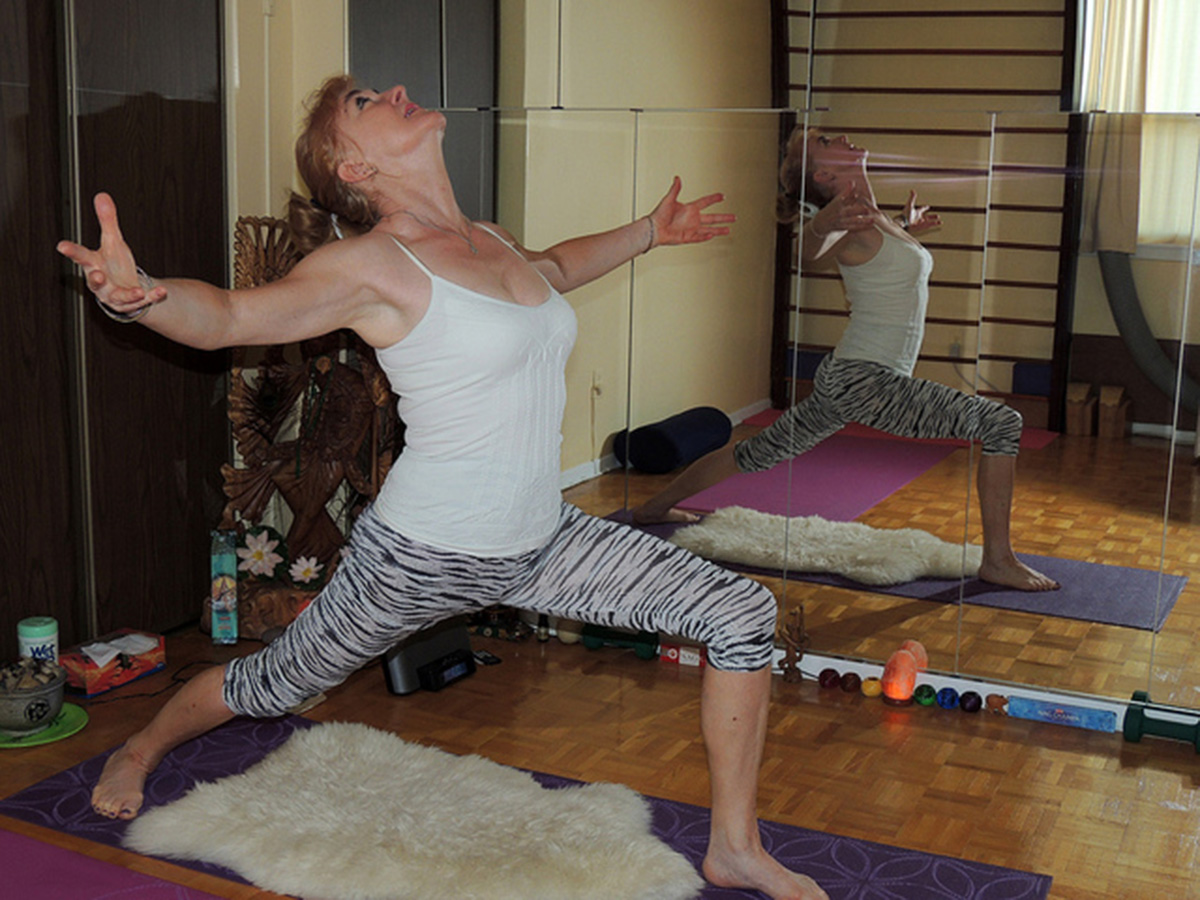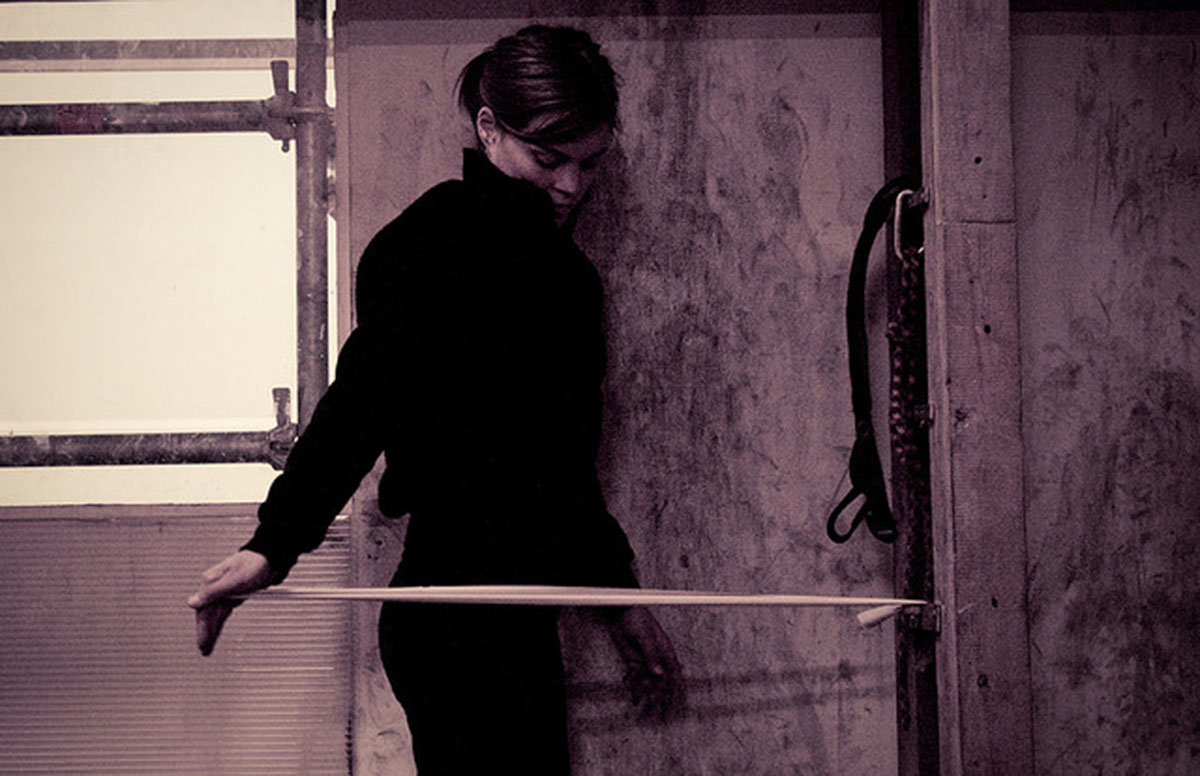When you begin fencing, you'll need all your attention to focus on improving your basic skills. A regular training regime that focuses on improving strength will help, but the best place to do that is the gym. If you haven't got time or you want something you can do at home easily, try these five exercises.
The Fencing Problem: Lunge
Your lunge is the foundation of your attacks in fencing; it's how you move into range to strike and score points. But it's an athletically demanding movement that requires a mix of power, stability and mobility. That's the reason it's used: lunges get the best from your body, but having better leg strength and core strength will help. Hip girdle strength, stability and mobility is the "secret sauce" to a great lunge but it's often left to develop in tandem with legs in exercises like squats and weighted lunges, without really getting any love of its own. Since you're training at home you can fix that with the yoga Warrior position.

The Fix: Yoga Warrior Pose
Contrary to what Gwyneth Paltrow would have us all believe, yoga doesn't fix everything. But the warrior position is perfect for improving your lunge. Stand with your front foot facing directly forward, your rear foot at 45° to it (not 270°!) and your rear leg straight but not locked out. Bend your front knee until your thigh is nearly parallel with the ground. Turn your hips so that they're both facing forwards. If your left leg is forward, hold your left arm out straight in front of you at shoulder height, palm down. Hold your right arm out behind you so that your arms, shoulders and chest form a straight line, with palms facing down.
The Details
It's much easier to do this posture if you let your feet and legs relax and allow your lower back to dorsiflex. But easy's not what we're after. Instead, extend your low back by dropping your pelvis and rotating it slightly forward so your tailbone moves forward and down. Raise your sternum and elongate your neck, and focus on pelvic alignment and femoral external rotation: you want an open, strong stance with the weight in the outer edge of your rear foot and evenly distributed over the ball, small toe and heel of the front foot. Most people find that when they externally rotate their femur, the ball of their foot comes off the floor. Work on keeping the femur rotated and the ball down: the work you do now will save you from impact, torsion and overextension lunge injuries in competitions and training down the line. And unlike weighted lunges or squats Warrior helps strengthen and activate the muscles along the side of your body that help you recover faster from lunges by pulling you back into guard.
The Fencing Problem: Agility
Fencing is a highly agile sport. You need fast, confident foot placement and weight movement. Being light-footed can win you the match against an opponent with faster hands and leaden feet, so time spent working on agility will pay off. The more agile you are, too, the better you'll recover from slips and trips. So it's about your defensive game and injury resistance too.
READ Different types of self-defense sports (Martial Arts)
The Fix: Ladder Runs
Ladder runs are simple. You lay out a ladder on the floor and run along it, and the limited places to stand restrict where you can put your feet and force you to become more agile. It's a favorite of American football players, soccer players, tennis players, boxers and, yes, fencers. You don't need a rope ladder — though they're easy to get and take up little space. You can make one out of hardware store rope, but they tend to get curly quickly. The best choice is artist's masking tape. You can stick it to the floor, it stands out, and it comes away easily leaving no marks. Mark out a ladder on the floor and you're away!
The Details
Try doing repetitive footwork drills using your ladder. For instance: Guard>Advance>Lunge>Forward Recover>Advance>Lunge, and repeat til you run out of ladder. Ladders can also be a good place to work on tempo.
Improve Shoulder Function For Fencing At Home
The Fencing Problem: Shoulder Stability
Shoulder stability is very important for a fencer. Poor shoulder stability means less control over the blade and more potential for injury. In the vast majority of cases, what makes shoulders unstable is poor scapula positioning during actions, caused by poor neurological activation and patterning. Weakness in the muscles themselves is usually a result of this, so the way to improve shoulder stability is through patterning work.

The Fix: Band Press-Outs
Stand with a resistance band held in both hands. Hold one hand at shoulder height and close to your body, and extend the other arm at shoulder height. You want the pressure from the band to be as lateral as possible, and noticeable but not too difficult. You shouldn't have to concentrate on making extra effort: this is a patterning movement.
The Details
The extended arm should have the thumb up and the point of the elbow vertically down to encourage the use of the humeral external rotators to resist the pull of the band during the movement. The retracted hand should have the palm facing the body with the forearm vertical to preferentially stress the biceps and upper back, making holding the band in place easier. To improve the effect of this exercise, draw circles or figures of eight with the extended arm between extensions.
The Fencing Problem: Grip And Shoulder Mobility
The shoulder is an odd joint. It's a complex joint — many parts must move together, so there's a lot to go wrong. If one part of your shoulder is fixed in place because of an injury you'll see the whole structure go wrong as the rest deforms to accommodate the disruption. Meanwhile, grip strength is essential for a fencer, not because holding onto the sword like grim death is the way to win matches, but because more strength means when you hold the sword lightly and with control, you'll have more control.
The Fix: Sledgehammer Casts
It's hard to do these if you live in a flat. But you can buy short handled sledges with heavier heads to compensate. Use one or two hammers according to taste. If you're new to these use light hammers — 7lb, the lightest standard sledgehammer head, is plenty and may be too heavy for some. Stand with your hammers held vertical, your elbows touching your sides, neck erect, back straight and shoulders relaxed.
READ Tai Chi: When Martial Art Is Used To Fight Stress And Embrace Life
Allow that to help pull the hammer back into its starting position. That's a basic cast. BE CAREFUL not to hit yourself in the spine (or anywhere else) with a sledgehammer. If you think you might, don't do this one or wrap your sledgehammer head in foam. Done right this is perfectly safe. It helps your triceps work better and develops mobility in the shoulder joint naturally, and at the same time it's a grip workout like no other with the hand in an appropriate position for fencing.
If you like what you've read, have something to add or feel I've left something out, please get in touch in the comments section below.
- Photo courtesy of Synergy by Sharka via Flickr:https://www.flickr.com/photos/shaarka/7730603380/
- Photo courtesy of liquene: www.flickr.com/photos/liquene/4042007870/


Your thoughts on this